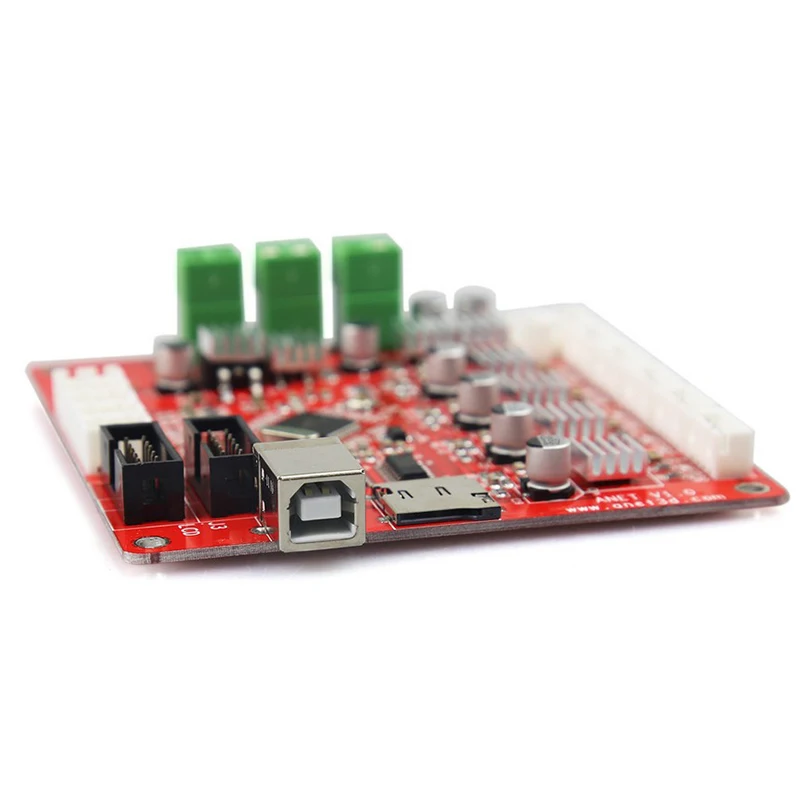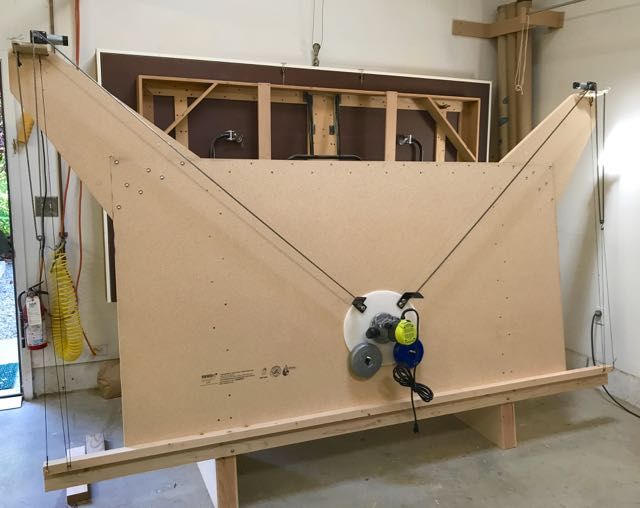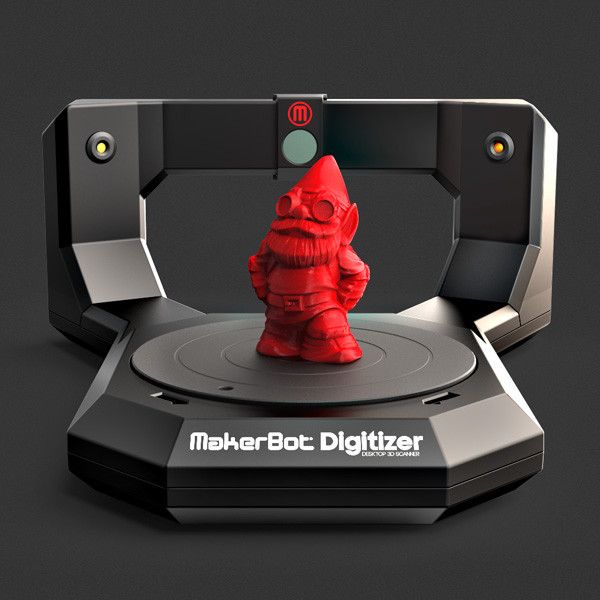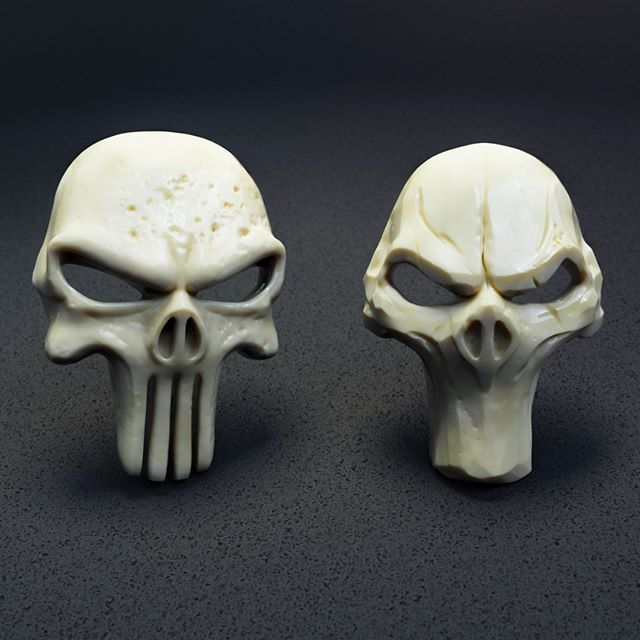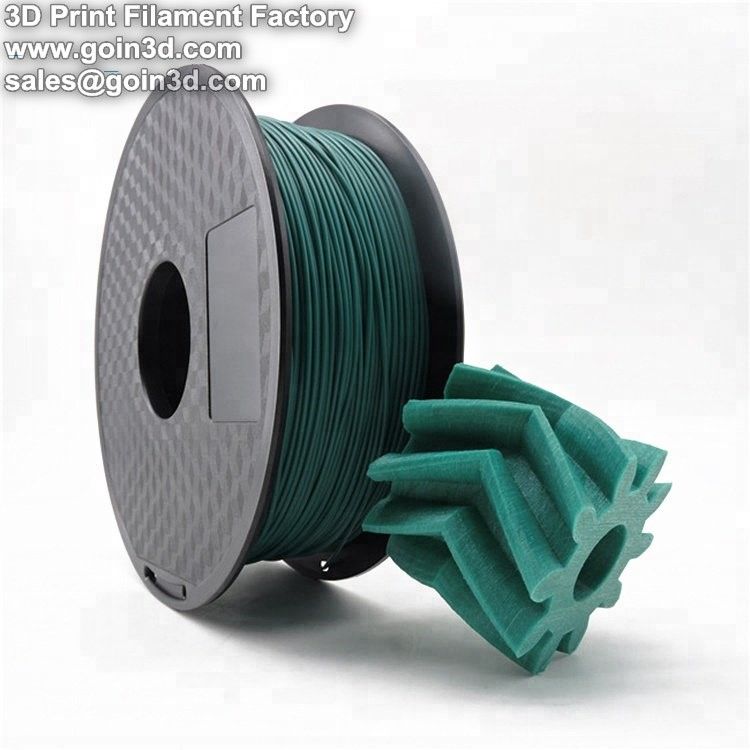Supplies for 3d printing
15 Essential 3D Printer Supplies to Keep in Stock for 3D Printing
ADVERTISEMENT
When working with 3D printers, we do not like to disturb our projects in between due to the shortage of supplies that are often needed.
Hence, it is always important to make a list of 3D printer supplies and keep those in abundance. You must refill your stock when you feel it may end soon.
But what are the things that you should keep in excess all the time? The question is very obvious because you cannot just go on and accumulate unnecessary things and regret later.
While it is okay to be excited when experiencing the potentials of 3D printing niche, you must stay calm as well. With a plethora of benefits, you may feel overwhelmed at times.
But what makes it more frustrating is when you do not have the right tools to fix the various glitches that may arise from time to time.
It is very much evident from the prospects of additive manufacturing is that technology is vast. And, it keeps on changing. There was not so long back when we did not know that 3D printing existed.
Because it was limited to industrial applications. However, the rapid pace with which the growth in the industry is accelerating would soon embark on a new beginning. A lot of consumers and home users will welcome these machines for day to day operations.
The compact desktop 3D printers with easy to operate workflows are just the start of a new phase. And, many individuals have already made ways for these machines at homes and offices.
With that said, shouldn’t we also stay alert about the essential 3D printer supplies and keep a check on them so as to never fall short of these?
ADVERTISEMENT
List of 3D Printer Supplies We Must Stock Up
Did you know that the right tool could help you turn your average prints to awesome? Not every user can buy the expensive 3D printers offering professional quality 3D prints.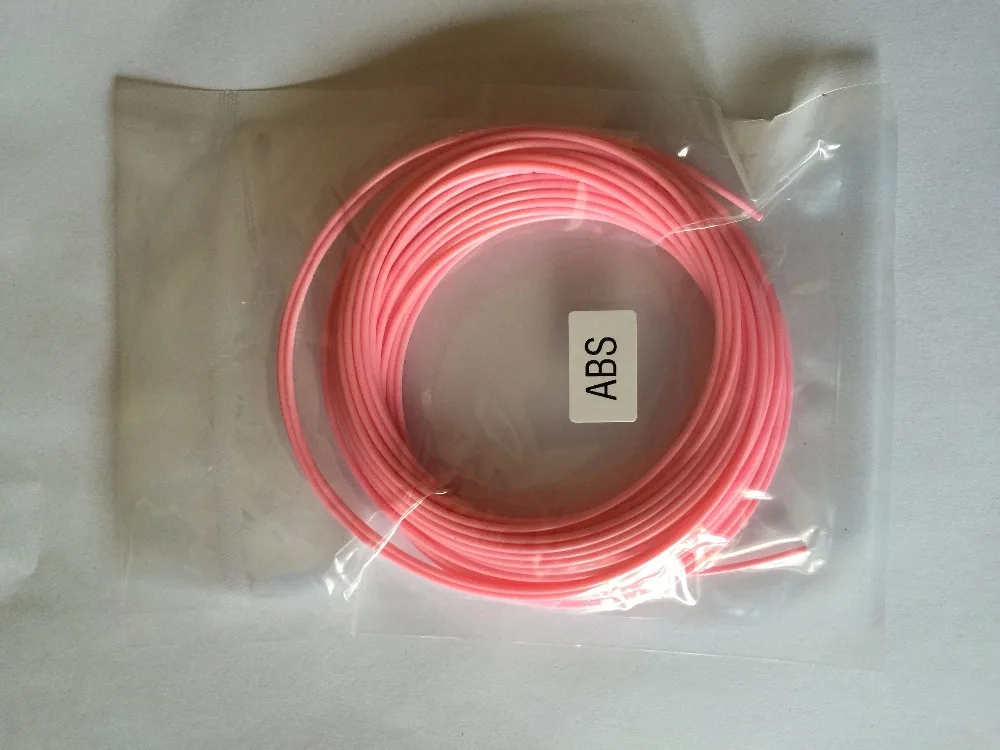
But with a little preparation, one can do amazing bring amazing and noticeable changes to the print results and finish. Moreover, you must have enough supplies to ensure you do not have to stop your printing project before you could finish it.
For all these reasons, here are a few essentials you must always keep closer.
Filament
How can we forget that? No one can print without the filaments. Hence, you must have enough stocks of different types of filament that you often use for 3D Printing.
Who knows you may need to print something right away? This is when you would hate waiting for the manufacturer to ship the material to your address.
Also, the possibility of failed prints is even common among experts. Hence, the material that may look enough would not last long to complete the desired print with few failed attempts.
So, you must decide with your experience how much filament you must keep handy. Depending on your regular use, this could be an easy guess, isn’t it?
ADVERTISEMENT
Filament Storage Box
Right after you find yourself with an excess of filament that you may not be used in a week or so, you start worrying about the storage part.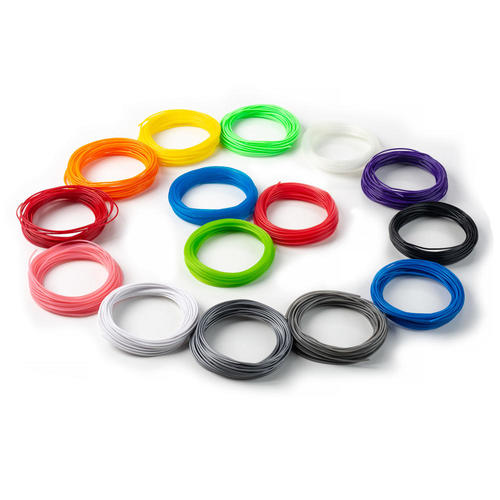
Almost every filament can spoil because of the absorption of excess moisture. And, the problem is evident in the print results as well. So, ensuring enough space for your filaments is again very important.
When makers ignore the urgency of wrapping the filaments inside an airtight container, they often have to face issues such as poor layer adhesion, nozzle clogging, warping, and many others.
You can find various types of containers and can choose the one you like. Just ensure you do not leave your 3D printer material lying anywhere.
Desiccant Pouches
If you want to go for a cheaper option that takes less space than the vacuum-sealed containers, you can go with this choice, the desiccant pouches. You can store your filaments inside these pouches and keep them away from moisture.
Tape
If you have been struggling to master the first layer adhesion, you must have tried masking tape. A lot of users turn to this option when not able to find that sweet spot on the build platform.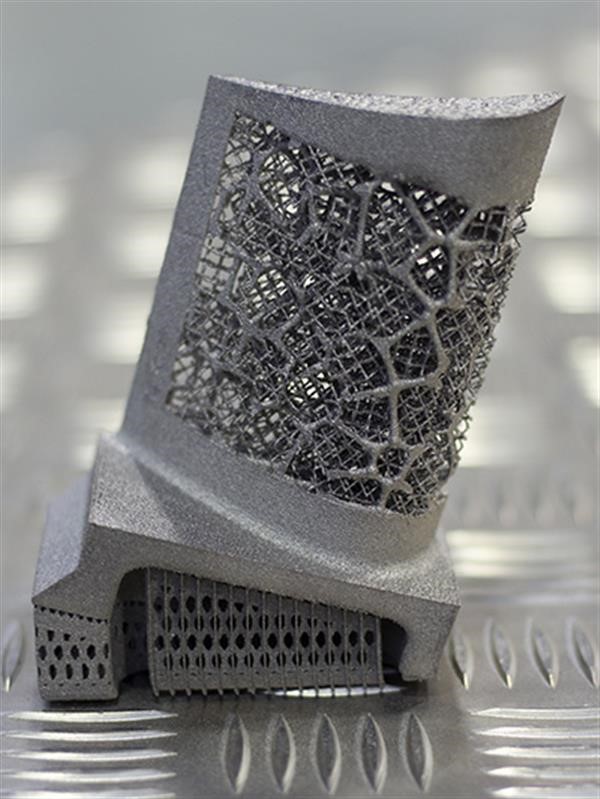
Not just that, it also makes it easier to remove parts from the build surface. On top of that, the masking tape protects the printer’s build plate from scratches and marks.
And, if you do know how much it helps, you must understand not having it around when you needed it. With all that said, you must know where we are pointing. Masking tape is the most common and crucial accessory that every user must keep in excess.
Alternatively, you can also use Kapton tape. This tape is even better with those materials that are highly susceptible to warping. Just remember to use the one with greater width. In this case, you would not need too many strips to cover the platform.
ADVERTISEMENT
Increase Adhesion with Glue Sticks and Hair Sprays
One more accessory that we usually include in the list for improving bed adhesion is the PVA glue stick.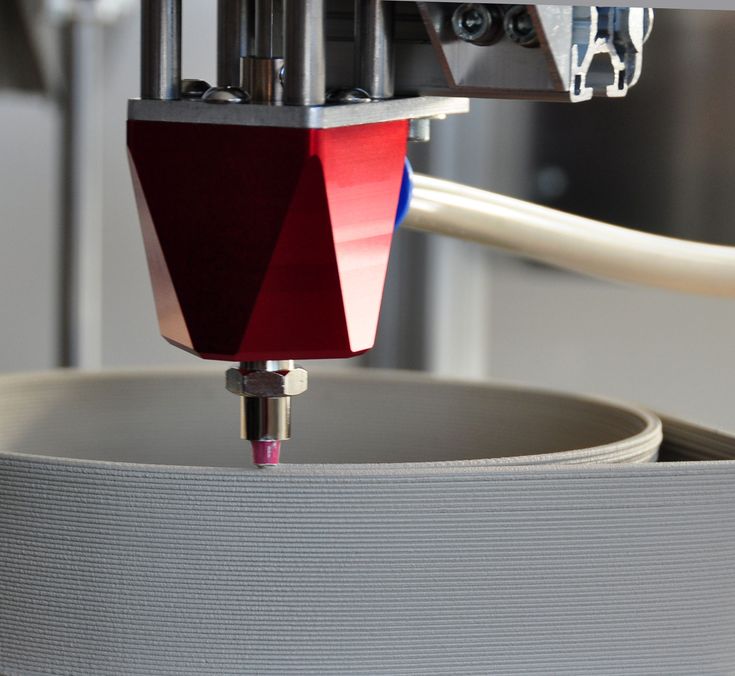
Although the option may fail to work with materials prone to excess warping, it contributes greatly to PLA, PETG, and other materials. Also, it is very easy to wipe off with water, when cleaning the bed to get rid of it.
You can directly apply the glue to the print bed and take it off using a wipe when done printing. Because of its ease of use, the product is popular among makers and 3D printing users.
Above all, it is cheap and very reasonable in its pricing. So, there aren’t any issues when keeping three or four more aside.
The hair sprays also work in a similar fashion. You just spray the product on the top of the print bed. This enhances the bed adhesion and it is easy to remove as well.
However, regular use of hairsprays without extra care for cleaning would eventually harm the print bed. One more tip, using hair spray with Kapton tape is a very effective solution for perfect bed adhesion for tricky materials.
Build Plate
You must be wondering, why? 3D printers already have build plates. Otherwise, how would 3D printing take place? However, not every print bed offers the desired first layer adhesion.
Otherwise, how would 3D printing take place? However, not every print bed offers the desired first layer adhesion.
As mentioned above, budget printers often come with this limitation. But there is always another way out of every problem.
By choosing a glass plated print beds, you can astonishingly enhance the first layer adhesion. Some materials may not have problems with a simple one that came along with your 3D printer.
So, you can keep using it. And, swap it with the updated build plate when needed. This way, you can also increase the self-life of these platforms. Also, glass plates provide a better surface finish. Hence, you can ultimately achieve better print quality.
ADVERTISEMENT
Mask for Preventing Dust
Are we not always advised to work in a well-ventilated room when 3D printing? There is a reason for this. When you heat plastic-based materials, it emits noxious and irritating fumes.
Depending on which filament you use, the emission differs. Some release excess of these gases and others may not do so at all.
Some release excess of these gases and others may not do so at all.
These gases could be highly dangerous if inhaled with prolonged exposure. Those filaments that are free from the emission of harmful gases do release microparticles when heated which may pose a threat to the respiratory system.
Looking at all these challenges, and understanding that not every 3D printer comes with an enclosed compartment, it is important to include the dust mask in the list of essentials.
These dust masks are a huge requirement for those working very closely around the 3D printers. Even with a ventilated room, you must take extra precautions to keep yourself safe.
You can take these off when leave the room where printing is in progress. However, do not forget to put it on again when you re-enter the workshop.
Build Plate Sticker
Need extra adhesion? The build plate stickers are yet again a very awesome alternative for 3D printing users. The best part is that the stickers could accommodate almost every filament available.
Hence, you do not have to work in different directions when printing materials with varying properties.
To use the stickers, you just have to stick these directly over the print platform. And, after a 3D printing project is over, you can take it off just like that.
ADVERTISEMENT
Digital Calliper
As you know that 3D printing brings with itself a huge amount of measurements for maintaining accuracy and preciseness of the parts. Hence, you would need a digital caliper time and again.
Sand Paper
Post-processing to perfect the finishing of the parts would definitely help enhance the looks of your models. And, if you are already putting so much effort into 3D Print an object, why not work a little more to perfect it completely.
The sandpaper is the first step before you plan to polish or paint your printed part. So, keeping them in stock is not just an option but essentially important.
Super Glue and Acetone
You can only go on counting when thinking about the usage of super glue when 3D printing. It can repair parts that are broken, fill gaps, connect two 3D parts together, etc.
It can repair parts that are broken, fill gaps, connect two 3D parts together, etc.
It is very effective and must be on the list of must-haves. The 3D printer supplies aren’t complete without including it in the list.
Similarly, acetone is also a bonding agent that works best with ABS. It not only provides amazing bond strength but could help remove the difference at sites where the parts connect together. Hence, it also provides a better finish to the parts.
ADVERTISEMENT
Different Diameter Nozzle Set
Varying nozzle diameter creates a huge difference in the print quality of the parts. For instance, the smaller diameter offers high precision and a negligible layer difference.
However, the bigger one would not be that great with hiding the layer difference. On the other hand, the bigger ones can create models faster than the smaller ones.
So, depending on the need for the 3D printing project, you may have to swap these nozzles from time to time.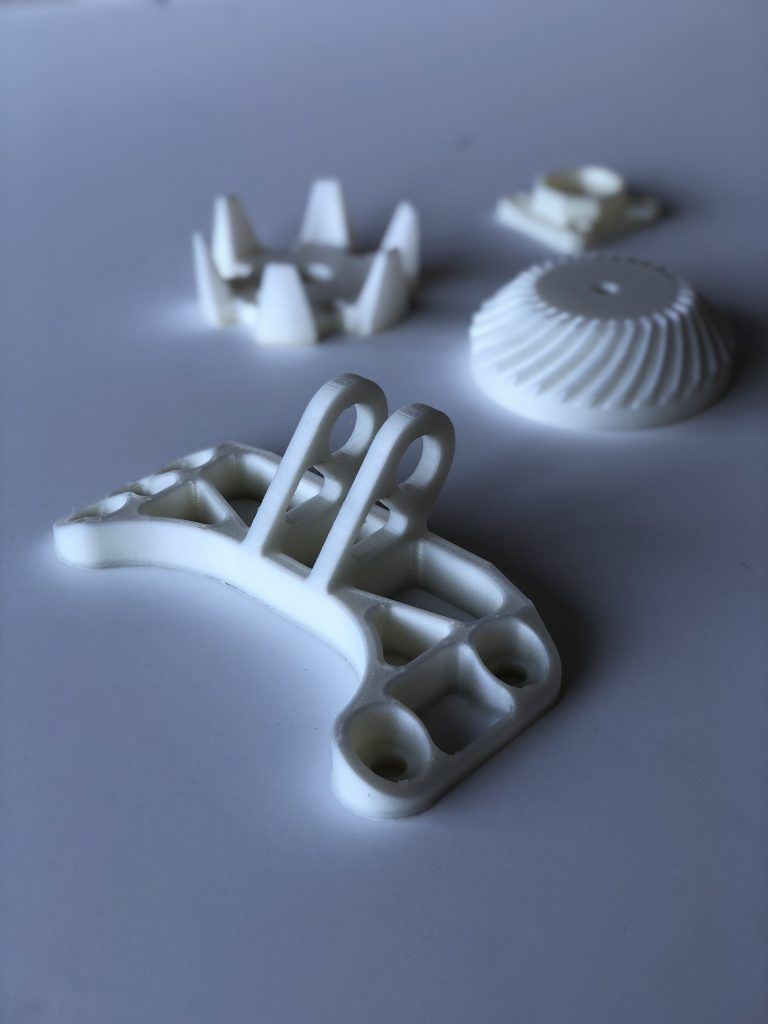 Now you know why these are important to include in the 3D printer supplies.
Now you know why these are important to include in the 3D printer supplies.
Cleaning Tools
You must ensure that the nozzle and extruders are free from clogging. Or, the problem could take a difficult shape. You may find the filament struggling to leave the print head.
Or, they may not come out at all. And, this will create a problem when printing. Would you like that to happen?
After every print, you must clean your nozzle. This is why the nozzle cleaning tools are necessary.
Tool Set for Carving the Printed Parts
There are certain parts that have finer details and uses a lot of support to stay up when printing. Hence, these parts may not turn out to be as smoother as those without fine details. Hence, you must keep carving tools along with you to give these parts the necessary makeup.
Spatula
The first layer adhesion could become messy when trying to remove 3D parts from the print bed. And, you will need a set of tools to get these out of the build plate.
The most popular and easy to use option is the set of spatulas. These are simple to work with and cannot be ignored when working with FDM 3D printers. These are the most essential. So, never forget to include these with the 3D printer supplies.
The Conclusion
Why do we need to stress so much on the 3D printing accessories? Don’t you want to create flawless parts without looking for supplies that may not be available when needed? We all want that, isn’t it?
Hence, one must take an extra case when choosing among the different 3D printer supplies and selecting the ones that are very much needed. Or else, you may never know how far your objects can go in terms of perfection.
Guide to 3D Printing Materials: Types, Applications, and Properties
3D printing empowers you to prototype and manufacture parts for a wide range of applications quickly and cost-effectively. But choosing the right 3D printing process is just one side of the coin. Ultimately, it'll be largely up to the materials to enable you to create parts with the desired mechanical properties, functional characteristics, or looks.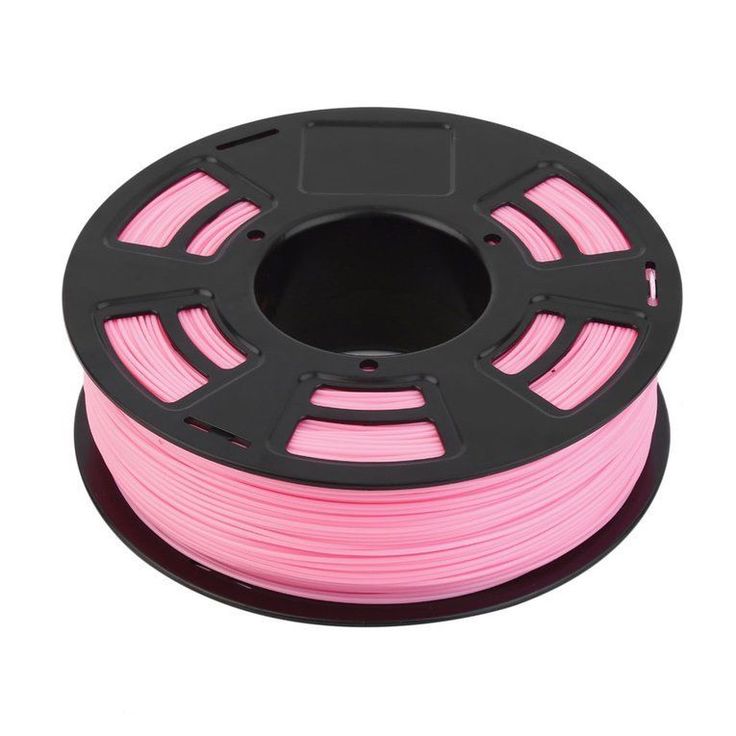
This comprehensive guide to 3D printing materials showcases the most popular plastic and metal 3D printing materials available, compares their properties, applications, and describes a framework that you can use to choose the right one for your project.
Interactive
Need some help figuring out which 3D printing material you should choose? Our new interactive material wizard helps you make the right material decisions based on your application and the properties you care the most about from our growing library of resins.
Recommend Me a Material
There are dozens of plastic materials available for 3D printing, each with its unique qualities that make it best suited to specific use cases. To simplify the process of finding the material best suited for a given part or product, let’s first look at the main types of plastics and the different 3D printing processes.
There are the two main types of plastics:
-
Thermoplastics are the most commonly used type of plastic.
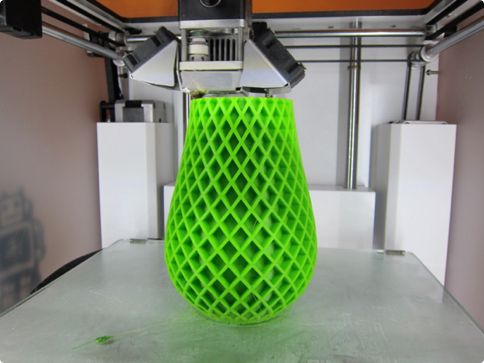 The main feature that sets them apart from thermosets is their ability to go through numerous melt and solidification cycles. Thermoplastics can be heated and formed into the desired shape. The process is reversible, as no chemical bonding takes place, which makes recycling or melting and reusing thermoplastics feasible. A common analogy for thermoplastics is butter, which can be melted, re-solidify, and melted again. With each melting cycle, the properties change slightly.
The main feature that sets them apart from thermosets is their ability to go through numerous melt and solidification cycles. Thermoplastics can be heated and formed into the desired shape. The process is reversible, as no chemical bonding takes place, which makes recycling or melting and reusing thermoplastics feasible. A common analogy for thermoplastics is butter, which can be melted, re-solidify, and melted again. With each melting cycle, the properties change slightly. -
Thermosetting plastics (also referred to as thermosets) remain in a permanent solid state after curing. Polymers in thermosetting materials cross-link during a curing process that is induced by heat, light, or suitable radiation. Thermosetting plastics decompose when heated rather than melting, and will not reform upon cooling. Recycling thermosets or returning the material back into its base ingredients is not possible. A thermosetting material is like cake batter, once baked into a cake, it cannot be melted back into batter again.
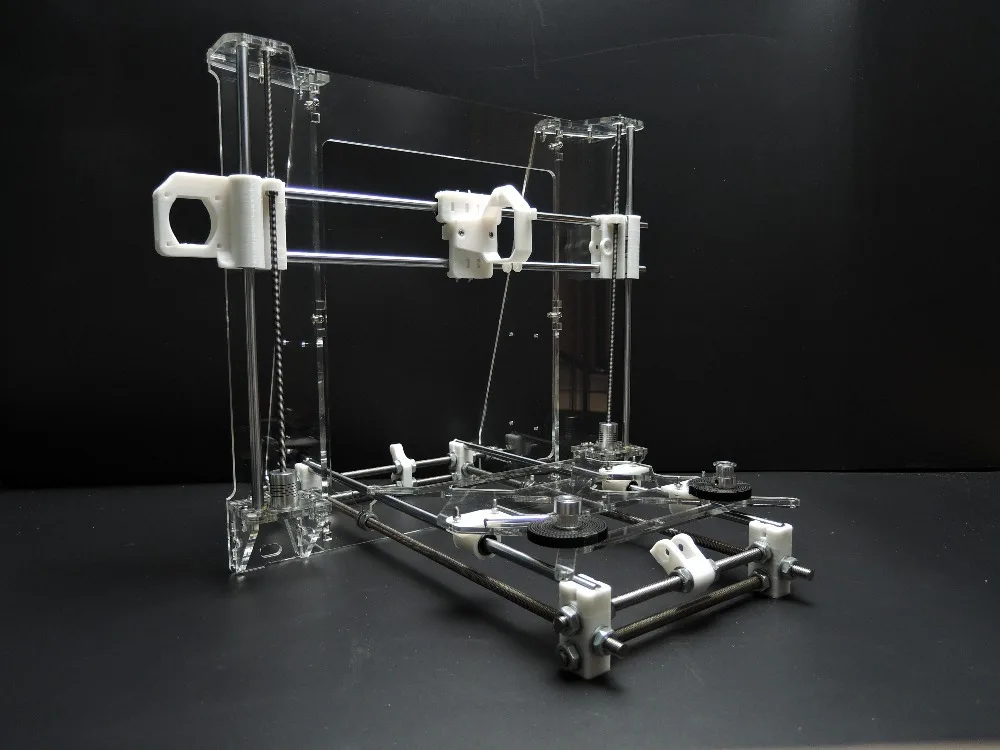
The three most established plastic 3D printing processes today are the following:
-
Fused deposition modeling (FDM) 3D printers melt and extrude thermoplastic filaments, which a printer nozzle deposits layer by layer in the build area.
-
Stereolithography (SLA) 3D printers use a laser to cure thermosetting liquid resins into hardened plastic in a process called photopolymerization.
-
Selective laser sintering (SLS) 3D printers use a high-powered laser to fuse small particles of thermoplastic powder.
Video Guide
Having trouble finding the best 3D printing technology for your needs? In this video guide, we compare FDM, SLA, and SLS technologies across popular buying considerations.
Watch the Videos
Fused deposition modeling (FDM), also known as fused filament fabrication (FFF), is the most widely used form of 3D printing at the consumer level, fueled by the emergence of hobbyist 3D printers.
This technique is well-suited for basic proof-of-concept models, as well as quick and low-cost prototyping of simple parts, such as parts that might typically be machined.
Consumer level FDM has the lowest resolution and accuracy when compared to other plastic 3D printing processes and is not the best option for printing complex designs or parts with intricate features. Higher-quality finishes may be obtained through chemical and mechanical polishing processes. Industrial FDM 3D printers use soluble supports to mitigate some of these issues and offer a wider range of engineering thermoplastics or even composites, but they also come at a steep price.
As the melted filament forms each layer, sometimes voids can remain between layers when they don’t adhere fully. This results in anisotropic parts, which is important to consider when you are designing parts meant to bear load or resist pulling.
FDM 3D printing materials are available in a variety of color options. Various experimental plastic filament blends also exist to create parts with wood- or metal-like surfaces.
The most common FDM 3D printing materials are ABS, PLA, and their various blends. More advanced FDM printers can also print with other specialized materials that offer properties like higher heat resistance, impact resistance, chemical resistance, and rigidity.
| Material | Features | Applications |
|---|---|---|
| ABS (acrylonitrile butadiene styrene) | Tough and durable Heat and impact resistant Requires a heated bed to print Requires ventilation | Functional prototypes |
| PLA (polylactic acid) | The easiest FDM materials to print Rigid, strong, but brittle Less resistant to heat and chemicals Biodegradable Odorless | Concept models Looks-like prototypes |
| PETG (polyethylene terephthalate glycol) | Compatible with lower printing temperatures for faster production Humidity and chemical resistant High transparency Can be food safe | Waterproof applications Snap-fit components |
| Nylon | Strong, durable, and lightweight Tough and partially flexible Heat and impact resistant Very complex to print on FDM | Functional prototypes Wear resistant parts |
| TPU (thermoplastic polyurethane) | Flexible and stretchable Impact resistant Excellent vibration dampening | Flexible prototypes |
| PVA (polyvinyl alcohol) | Soluble support material Dissolves in water | Support material |
| HIPS (high impact polystyrene) | Soluble support material most commonly used with ABS Dissolves in chemical limonene | Support material |
| Composites (carbon fiber, kevlar, fiberglass) | Rigid, strong, or extremely tough Compatibility limited to some expensive industrial FDM 3D printers | Functional prototypes Jigs, fixtures, and tooling |
Stereolithography was the world’s first 3D printing technology, invented in the 1980s, and is still one of the most popular technologies for professionals.
SLA parts have the highest resolution and accuracy, the clearest details, and the smoothest surface finish of all plastic 3D printing technologies. Resin 3D printing is a great option for highly detailed prototypes requiring tight tolerances and smooth surfaces, such as molds, patterns, and functional parts. SLA parts can also be highly polished and/or painted after printing, resulting in client-ready parts with high-detailed finishes.
Parts printed using SLA 3D printing are generally isotropic—their strength is more or less consistent regardless of orientation because chemical bonds happen between each layer. This results in parts with predictable mechanical performance critical for applications like jigs and fixtures, end-use parts, and functional prototyping.
SLA offers the widest range of material options for plastic 3D printing.
SLA 3D printing is highly versatile, offering resin formulations with a wide range of optical, mechanical, and thermal properties to match those of standard, engineering, and industrial thermoplastics.
| Formlabs Materials | Features | Applications |
|---|---|---|
| Standard Resins | High resolution Smooth, matte surface finish | Concept models Looks-like prototypes |
| Clear Resin | The only truly clear material for plastic 3D printing Polishes to near optical transparency | Parts requiring optical transparency Millifluidics |
| Draft Resin | One of the fastest materials for 3D printing 4x faster than standard resins, up to 10x faster than FDM | Initial Prototypes Rapid Iterations |
| Tough and Durable Resins | Strong, robust, functional, and dynamic materials Can handle compression, stretching, bending, and impacts without breaking Various materials with properties similar to ABS or PE | Housings and enclosures Jigs and fixtures Connectors Wear-and-tear prototypes |
| Rigid Resins | Highly filled, strong and stiff materials that resist bending Thermally and chemically resistant Dimensionally stable under load | Jigs, fixtures, and tooling Turbines and fan blades Fluid and airflow components Electrical casings and automotive housings |
| Polyurethane Resins | Excellent long-term durability UV, temperature, and humidity stable Flame retardancy, sterilizability, and chemical and abrasion resistance | High performance automotive, aerospace, and machinery components Robust and rugged end-use parts Tough, longer-lasting functional prototypes |
| High Temp Resin | High temperature resistance High precision | Hot air, gas, and fluid flow Heat resistant mounts, housings, and fixtures Molds and inserts |
| Flexible and Elastic Resins | Flexibility of rubber, TPU, or silicone Can withstand bending, flexing, and compression Holds up to repeated cycles without tearing | Consumer goods prototyping Compliant features for robotics Medical devices and anatomical models Special effects props and models |
| Medical and dental resins | A wide range of biocompatible resins for producing medical and dental appliances | Dental and medical appliances, including surgical guides, dentures, and prosthetics |
| Jewelry resins | Materials for investment casting and vulcanized rubber molding Easy to cast, with intricate details and strong shape retention | Try-on pieces Masters for reusable molds Custom jewelry |
| ESD Resin | ESD-safe material to improve electronics manufacturing workflows | Tooling & fixturing for electronics manufacturing Anti-static prototypes and end-use components Custom trays for component handling and storage |
| Ceramic Resin | Stone-like finish Can be fired to create a fully ceramic piece | Engineering research Art and design pieces |
Explore Formlabs SLA Materials
Sample part
See and feel Formlabs quality firsthand. We’ll ship a free sample part to your office.
We’ll ship a free sample part to your office.
Request a Free Sample Part
Selective laser sintering (SLS) 3D printing is trusted by engineers and manufacturers across different industries for its ability to produce strong, functional parts. Low cost per part, high productivity, and established materials make the technology ideal for a range of applications from rapid prototyping to small-batch, bridge, or custom manufacturing.
As the unfused powder supports the part during printing, there’s no need for dedicated support structures. This makes SLS ideal for complex geometries, including interior features, undercuts, thin walls, and negative features.
Just like SLA, SLS parts are also generally more isotropic than FDM parts. SLS parts have a slightly rough surface finish due to the powder particles, but almost no visible layer lines.
SLS 3D printing materials are ideal for a range of functional applications, from engineering consumer products to manufacturing and healthcare.
The material selection for SLS is limited compared to FDM and SLA, but the available materials have excellent mechanical characteristics, with strength resembling injection-molded parts. The most common material for selective laser sintering is nylon, a popular engineering thermoplastic with excellent mechanical properties. Nylon is lightweight, strong, and flexible, as well as stable against impact, chemicals, heat, UV light, water, and dirt.
| Material | Description | Applications |
|---|---|---|
| Nylon 12 | Strong, stiff, sturdy, and durable Impact-resistant and can endure repeated wear and tear Resistant to UV, light, heat, moisture, solvents, temperature, and water | Functional prototyping End-use parts Medical devices |
| Nylon 11 | Similar properties to Nylon 12, but with a higher elasticity, elongation at break, and impact resistance, but lower stiffness | Functional prototyping End-use parts Medical devices |
| TPU | Flexible, elastic, and rubbery Resilient to deformation High UV stability Great shock absorption | Functional prototyping Flexible, rubber-like end-use parts Medical devices |
| Nylon composites | Nylon materials reinforced with glass, aluminum, or carbon fiber for added strength and rigidity | Functional prototyping Structural end-use parts |
Explore Formlabs SLS Materials
Sample part
See and feel Formlabs SLS quality firsthand.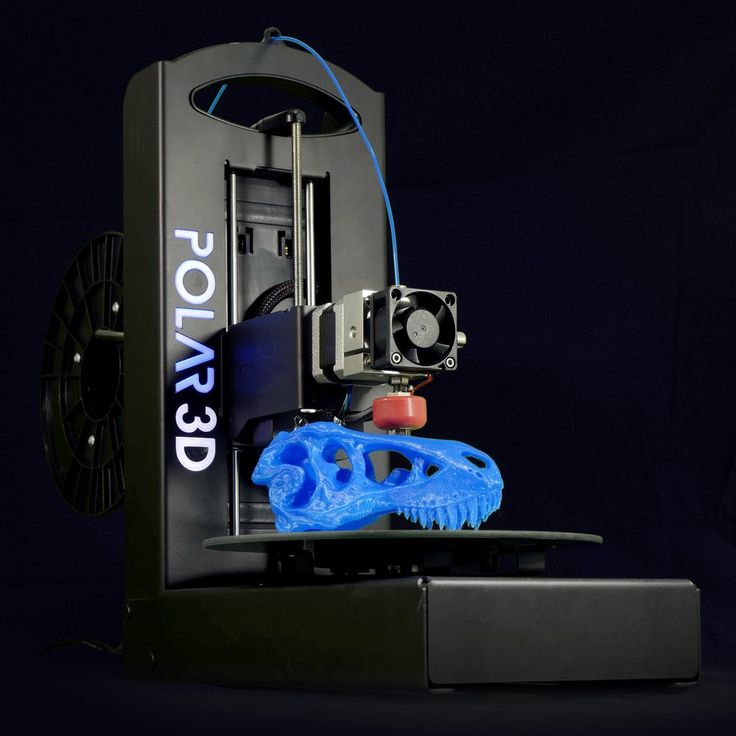 We’ll ship a free sample part to your office.
We’ll ship a free sample part to your office.
Request a Free Sample Part
Different 3D printing materials and processes have their own strengths and weaknesses that define their suitability for different applications. The following table provides a high level summary of some key characteristics and considerations.
| FDM | SLA | SLS | |
|---|---|---|---|
| Pros | Low-cost consumer machines and materials available | Great value High accuracy Smooth surface finish Range of functional materials | Strong functional parts Design freedom No need for support structures |
| Cons | Low accuracy Low details Limited design compatibility High cost industrial machines if accuracy and high performance materials are needed | Sensitive to long exposure to UV light | More expensive hardware Limited material options |
| Applications | Low-cost rapid prototyping Basic proof-of-concept models Select end-use parts with high-end industrial machines and materials | Functional prototyping Patterns, molds, and tooling Dental applications Jewelry prototyping and casting Models and props | Functional prototyping Short-run, bridge, or custom manufacturing |
| Materials | Standard thermoplastics, such as ABS, PLA, and their various blends on consumer level machines.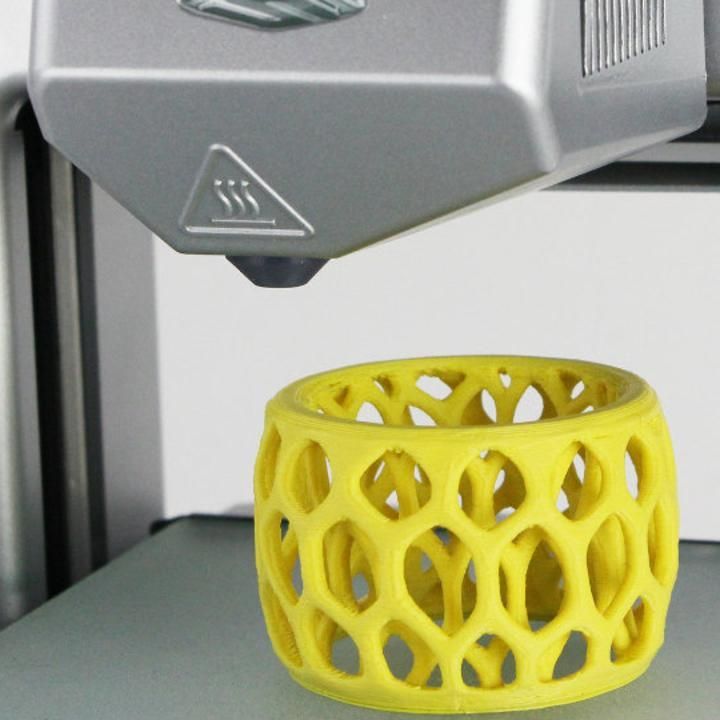 High performance composites on high cost industrial machines High performance composites on high cost industrial machines | Varieties of resin (thermosetting plastics). Standard, engineering (ABS-like, PP-like, flexible, heat-resistant), castable, dental, and medical (biocompatible). | Engineering thermoplastics. Nylon 11, Nylon 12, and their composites, thermoplastic elastomers such as TPU. |
Beyond plastics, there are multiple 3D printing processes available for metal 3D printing.
-
Metal FDM
Metal FDM printers work similarly to traditional FDM printers, but use extrude metal rods held together by polymer binders. The finished “green” parts are then sintered in a furnace to remove the binder.
SLM and DMLS printers work similarly to SLS printers, but instead of fusing polymer powders, they fuse metal powder particles together layer by layer using a laser. SLM and DMLS 3D printers can create strong, accurate, and complex metal products, making this process ideal for aerospace, automotive, and medical applications.
-
Titanium is lightweight and has excellent mechanical characteristics. It is strong, hard and highly resistant to heat, oxidation, and acid.
-
Stainless steel has high strength, high ductility, and is resistant to corrosion.
-
Aluminum is a lightweight, durable, strong, and has good thermal properties.
-
Tool steel is a hard, scratch-resistant material that you can use to print end-use tools and other high-strength parts..
- Nickel alloys have high tensile, creep and rupture strength and are heat and corrosion resistant.
Compared to plastic 3D printing technologies, metal 3D printing is substantially more costly and complex, limiting its accessibility to most businesses.
Alternatively, SLA 3D printing is well-suited for casting workflows that produce metal parts at a lower cost, with greater design freedom, and in less time than traditional methods.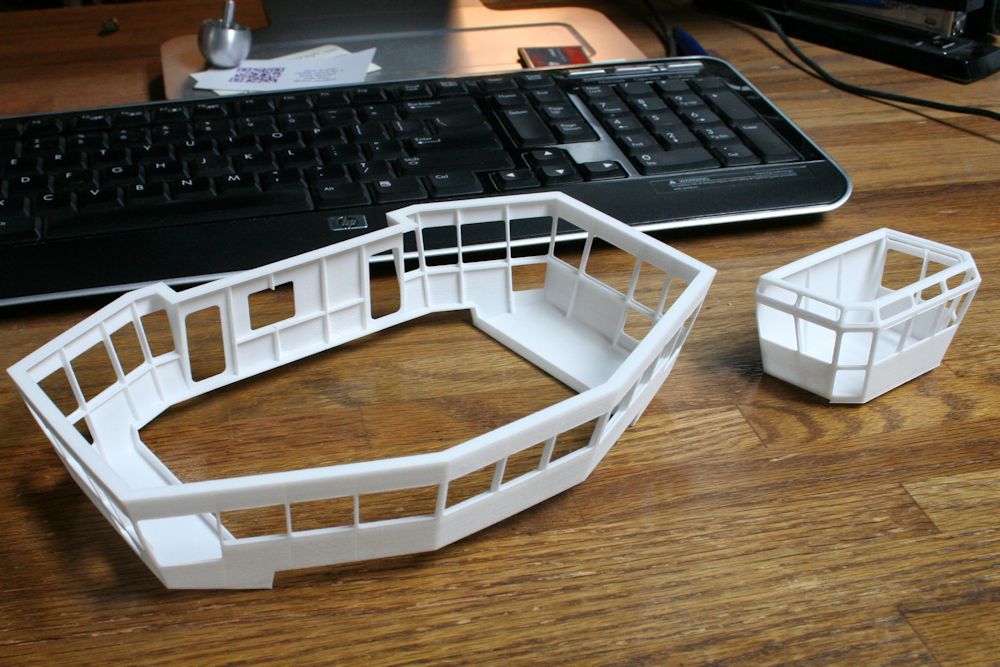
Another alternative is electroplating SLA parts, which involves coating a plastic material in a layer of metal via electrolysis. This combines some of the best qualities of metal—strength, electrical conductivity, and resistance to corrosion and abrasion—with the specific properties of the primary (usually plastic) material.
Plastic 3D printing is well-suited to create patterns that can be cast to produce metal parts.
With all these materials and 3D printing options available, how can you make the right selection?
Here’s our three-step framework to choose the right 3D printing material for your application.
Plastics used for 3D printing have different chemical, optical, mechanical, and thermal characteristics that determine how the 3D printed parts will perform. As the intended use approaches real-world usage, performance requirements increase accordingly.
| Requirement | Description | Recommendation |
|---|---|---|
| Low performance | For form and fit prototyping, conceptual modeling, and research and development, printed parts only need to meet low technical performance requirements. Example: A form prototype of a soup ladle for ergonomic testing. No functional performance requirements needed besides surface finish. | FDM: PLA SLA: Standard Resins, Clear Resin (transparent part), Draft Resin (fast printing) |
| Moderate performance | For validation or pre-production uses, printed parts must behave as closely to final production parts as possible for functional testing but do not have strict lifetime requirements. Example: A housing for electronic components to protect against sudden impact. Performance requirements include ability to absorb impact, housing needs to snap together and hold its shape. | FDM: ABS SLA: Engineering Resins SLS: Nylon 11, Nylon 12, TPU |
| High performance | For end-use parts, final 3D printed production parts must stand up to significant wear for a specific time period, whether that’s one day, one week, or several years. Example: Shoe outsoles. | FDM: Composites SLA: Engineering, Medical, Dental, or Jewelry Resins SLS: Nylon 11, Nylon 12, TPU, nylon composites |
Once you’ve identified the performance requirements for your product, the next step is translating them into material requirements—the properties of a material that will satisfy those performance needs. You’ll typically find these metrics on a material’s data sheet.
| Requirement | Description | Recommendation |
|---|---|---|
| Tensile strength | Resistance of a material to breaking under tension. High tensile strength is important for structural, load bearing, mechanical, or statical parts. | FDM: PLA SLA: Clear Resin, Rigid Resins SLS: Nylon 12, nylon composites |
| Flexural modulus | Resistance of a material to bending under load. Good indicator for either the stiffness (high modulus) or the flexibility (low modulus) of a material. Good indicator for either the stiffness (high modulus) or the flexibility (low modulus) of a material. | FDM: PLA (high), ABS (medium) SLA: Rigid Resins (high), Tough and Durable Resins (medium), Flexible and Elastic Resins (low) SLS: nylon composites (high), Nylon 12 (medium) |
| Elongation | Resistance of a material to breaking when stretched. Helps you compare flexible materials based on how much they can stretch. Also indicates if a material will deform first, or break suddenly. | FDM: ABS (medium), TPU (high) SLA: Tough and Durable Resins (medium), Polyurethane Resins (medium), Flexible and Elastic Resins (high) SLS: Nylon 12 (medium), Nylon 11 (medium), TPU (high) |
| Impact strength | Ability of a material to absorb shock and impact energy without breaking. Indicates toughness and durability, helps you figure out how easily a material will break when dropped on the ground or crashed into another object.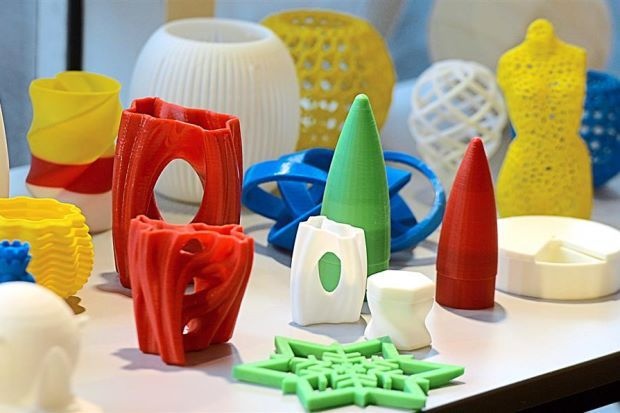 | FDM: ABS, Nylon SLA: Tough 2000 Resin, Tough 1500 Resin, Grey Pro Resin, Durable Resin, Polyurethane Resins SLS: Nylon 12, Nylon 11, nylon composites |
| Heat deflection temperature | Temperature at which a sample deforms under a specified load. Indicates if a material is suitable for high temperature applications. | SLA: High Temp Resin, Rigid Resins SLS: Nylon 12, Nylon 11, nylon composites |
| Hardness (durometer) | Resistance of a material to surface deformation. Helps you identify the right “softness” for soft plastics, like rubber and elastomers for certain applications. | FDM: TPU SLA: Flexible Resin, Elastic Resin SLS: TPU |
| Tear strength | Resistance of a material to growth of cuts under tension. Important to assess the durability and the resistance to tearing of soft plastics and flexible materials, such as rubber. | FDM: TPU SLA: Flexible Resin, Elastic Resin, Durable Resin SLS: Nylon 11, TPU |
| Creep | Creep is the tendency of a material to deform permanently under the influence of constant stress: tensile, compressive, shear, or flexural. Low creep indicates longevity for hard plastics and is crucial for structural parts. Low creep indicates longevity for hard plastics and is crucial for structural parts. | FDM: ABS SLA: Polyurethane Resins, Rigid Resins SLS: Nylon 12, Nylon 11, nylon composites |
| Compression set | Permanent deformation after material has been compressed. Important for soft plastics and elastic applications, tells you if a material will return to its original shape after the load is removed. | FDM: TPU SLA: Flexible Resin, Elastic Resin SLS: TPU |
For even more details on material properties, read our guide to about the most common mechanical and thermal properties.
Once you translate performance requirements to material requirements, you’ll most likely end up with a single material or a smaller group of materials that could be suitable for your application.
If there are multiple materials that fulfil your basic requirements, you can then look at a wider range of desired characteristics and consider the pros, cons, and trade-offs of the given materials and processes to make the final choice.
Try our interactive material wizard to find materials based on your application and the properties you care the most about from our growing library of materials. Do you have specific questions about 3D printing materials? Contact our experts.
Recommend Me a Material
Consumables for 3d printers
Our warehouse always has the widest range of materials for professional 3D printing: various types of plastics, photopolymers, composite powders, waxes, as well as support materials and special solvents.
There are currently about ten different 3D printing technologies in use, each of which involves the use of a particular material. The most widely used thermoplastics (PLA, ABS), foundry wax, photopolymer resin, gypsum. But every year this list is supplemented - individual models of 3D printers can print with concrete, metal alloys, edible substances, and even biomaterials.
ABS plastic
ABS plastic is known as acrylonitrile butadiene styrene.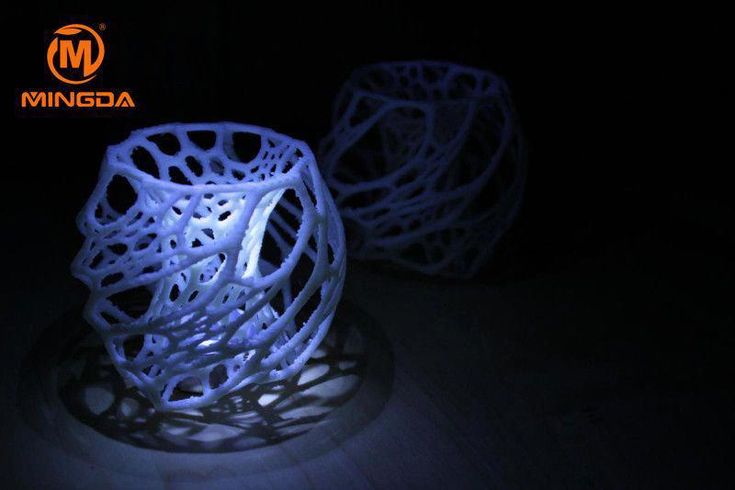 This is one of the best consumables for 3D printing. Such plastic is odorless, non-toxic, impact-resistant and elastic. The melting temperature of ABC plastic is from 240°C to 248°C. It is available for retail sale in the form of a powder or thin plastic threads wound on bobbins.
This is one of the best consumables for 3D printing. Such plastic is odorless, non-toxic, impact-resistant and elastic. The melting temperature of ABC plastic is from 240°C to 248°C. It is available for retail sale in the form of a powder or thin plastic threads wound on bobbins.
Polylactide (PLA)
Polylactide is the most biocompatible and environmentally friendly material for 3D printers. It is made from the remains of biomass, sugar beet or corn silage. Having a lot of positive properties, polylactide has two significant drawbacks. Firstly, the models made from it are short-lived and gradually decompose under the influence of heat and light. Secondly, the production cost of polylactide is very high, which means that the cost of models will be much higher than similar models made from other materials. Used in 3D printing technologies: SLS and FDM.
HDPE
This is the most common type of plastic in the world, from which PET bottles, canisters, pipes, films, bags, etc.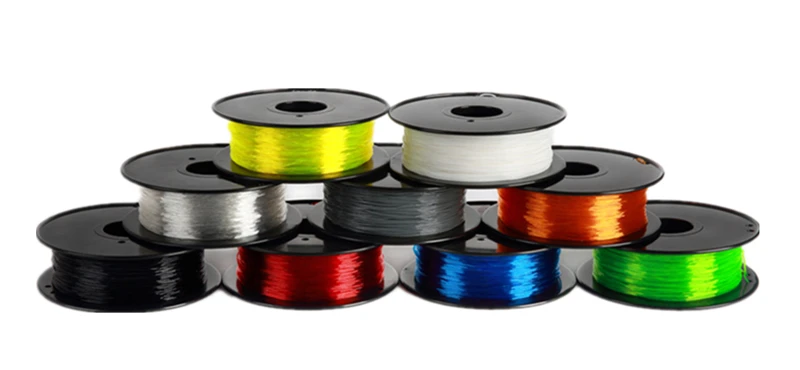 are made. In 3D printing, low-density polyethylene is the unsurpassed leader. This material can be used in any 3D printing technology.
are made. In 3D printing, low-density polyethylene is the unsurpassed leader. This material can be used in any 3D printing technology.
Polypropylene (PP)
Polypropylene is the lightest of all currently existing plastic masses. Compared to HDPE, it melts worse and resists abrasion better. At the same time, it is vulnerable to active oxygen and deforms at low temperatures.
Polyphenylsulfone (PPSU)
This material came to 3D printing from the aircraft industry. It practically does not burn, is characterized by heat resistance, high hardness. It resembles ordinary glass, but surpasses it in strength. Used in 3D printing technologies: SLS and FDM.
Acrylic
Acrylic is used in 3D printing to create transparent models. When using acrylic, the following features must be taken into account: this material requires a higher melting point than ABS plastic, and it cools and hardens very quickly. A lot of small air bubbles appear in heated acrylic, which can cause visual distortions of the finished product.
Concrete
Currently, test samples of 3D printers for printing with concrete have been made. These are huge printing devices that painstakingly, layer by layer, “print” construction details and structures from concrete. Such a 3D printer can “print” a residential two-story house with a total area of 230 m2 in just 20 hours.
For 3D printing, an improved grade of concrete is used, the formula of which is 95% the same as that of ordinary concrete.
Plaster
Gypsum materials are widely used in modern 3D printing. Models made of gypsum are short-lived, but have a very low cost. Such models are ideal for making objects intended for presentations. They can be shown as a sample to customers and clients, they will perfectly convey the shape, structure and size of the original product. Since plaster models are highly resistant to heat, they are used as casting samples.
Wood fiber
Inventor Kai Parthi has developed a special wood fiber for 3D printing.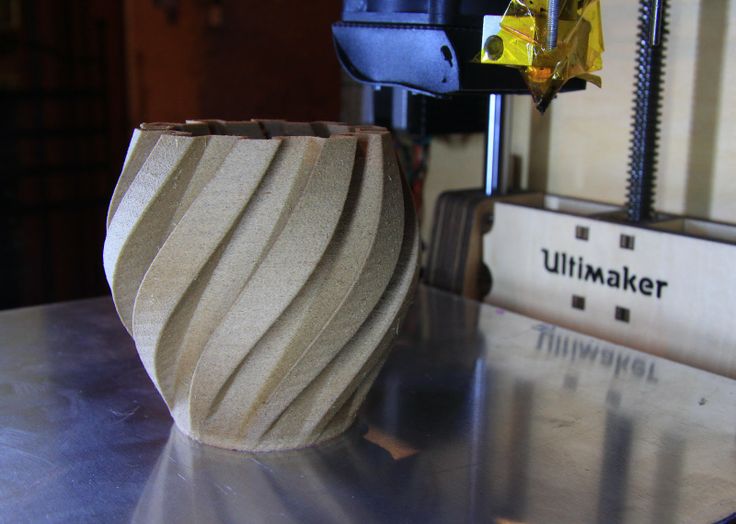 The fiber consists of wood and a polymer and is similar in properties to polyactide (PLA). The combined material allows you to get durable and solid models that look like wooden products and have the smell of freshly sawn wood. Currently, the innovative material is only used in self-replicating RepRap printers.
The fiber consists of wood and a polymer and is similar in properties to polyactide (PLA). The combined material allows you to get durable and solid models that look like wooden products and have the smell of freshly sawn wood. Currently, the innovative material is only used in self-replicating RepRap printers.
Metal powder
No plastic can replace metal with its pleasant soft sheen and high strength. Therefore, 3D printing often uses powder from light and precious metals: copper, aluminum, their alloys, as well as gold and silver. However, metal models do not have sufficient chemical resistance and have high thermal conductivity, so fiberglass and ceramic inclusions are added to the metal powder for printing.
Nylon
Nylon printing has a lot in common with ABS printing. The exceptions are the higher printing temperature (about 320°C), high water absorption capacity, longer curing time, the need to evacuate the extruder due to the toxicity of the nylon components. Nylon is a rather slippery material, for its use it is necessary to equip the extruder with spikes. Despite these shortcomings, nylon is successfully used in 3D printing, since parts from this material are not as rigid as those made from ABS plastic, and sliding hinges can be used for them.
Nylon is a rather slippery material, for its use it is necessary to equip the extruder with spikes. Despite these shortcomings, nylon is successfully used in 3D printing, since parts from this material are not as rigid as those made from ABS plastic, and sliding hinges can be used for them.
Polycaprolactone (PCL)
Polycaprolactone is close in properties to biodegradable polyesters. It is one of the most popular consumables for 3D printing. It has a low melting point, hardens quickly, provides excellent mechanical properties to finished products, easily decomposes in the human body, and is harmless to humans. In addition, it can be used in several 3D printing technologies at once: SLS, ZCorp and FDM.
Polycarbonate (PC)
Polycarbonate is a hard plastic that is able to maintain its physical properties in conditions of extremely high and extremely low temperatures. It has high opacity, has a high melting point, and is suitable for extrusion processing.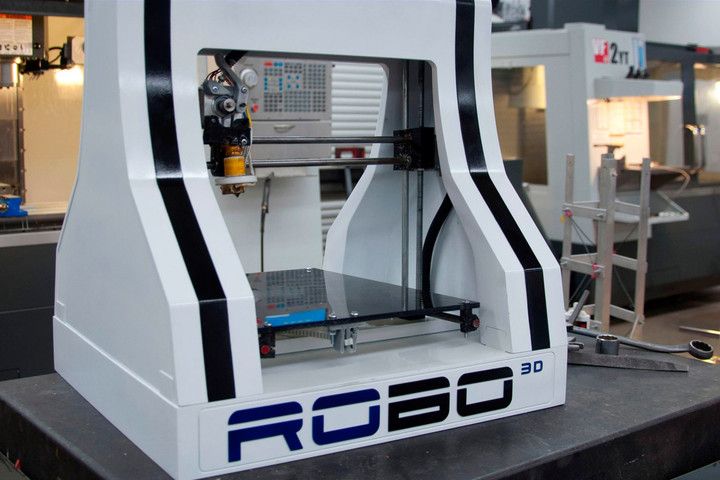 At the same time, its synthesis is associated with a number of difficulties and is not environmentally friendly. Used to print heavy duty models in several 3D printing technologies: SLS, LOM and FDM.
At the same time, its synthesis is associated with a number of difficulties and is not environmentally friendly. Used to print heavy duty models in several 3D printing technologies: SLS, LOM and FDM.
Chocolate
The printer applies each next layer of chocolate on top of the previous one. Due to the ability of chocolate to quickly solidify and harden when cooled, the printing process is quite fast. In the near future, such printers will be in demand in confectionery and restaurants.
Ceramic
3d printing with ceramics is under development, but today's samples already show promise for full-fledged ceramic products
Where to buy plastic for 3D printing? In 3dcorp.ru!
In our assortment you will find not only all the necessary equipment for 3D printing, but also a wide range of consumables at extremely attractive prices. You can buy ABS or PLA plastics from us, as well as other materials for the implementation of projects of any complexity. If necessary, our experts will answer all your questions and help you choose the right materials for 3D printers.
If necessary, our experts will answer all your questions and help you choose the right materials for 3D printers.
Consumables for 3D printers. What and how to print.
Consumables for 3D printers: What and how to print? Here you will find answers to this question, as well as information about the latest materials available and in development.
Consumables
6
Subscribe to the author
Subscribe
Don't want
Hello everyone!
The other day I received a new series of rainbow colored PLA plastic from Eryone.
There are four colors in the new series. All colors are silk.
This series is also distinguished by coils. Eryone has completely redesigned the reels and made them out of cardboard for the purpose of working in Europe. You probably immediately remembered the products from Hi-Tech Plast and Sintec with their Deshman cartons in the form of coils.
But do not rush to swear....
Read more
Consumables
5
Follow the author
Subscribe
Don't want
Good afternoon!
Today I decided to publish a review of the prints of conventional plastics from Eryone. I mainly took unusual plastics from this manufacturer, but since there is a need for simple PETG and PLA, I decided to replenish the stocks of plastic with Erion coils from the sale of leftovers.
Today we will look at several colors of PETG.
Eryone's PETG plastic range is divided into three categories:
Monocolor
Transparent...
Read more
Consumables
ten
Subscribe to the author
Subscribe
Don't want to
There was a need to print a wax ring to demonstrate to jewelers that it is generally possible to do it qualitatively on an FDM printer.
The only Russian-made Wax3D wax known to us from Filamentarno was chosen for printing!
Read more
Consumables
four
Subscribe to the author
Subscribe
Don't want
Meet our budget news!
Today we will talk about TPU FLEX 60D + 0
We have an addition to the flexible filament family - TPU 60D +0.
Unfilled TPU filament 60D Shore. This hardness ensures comfortable printing without the filament wrapping around or slipping on the feed rollers.
Ease of printing is also expressed in the fact that the polymer without filling and your nozzles will remain intact...
Read more
Consumables
eleven
Subscribe to the author
Subscribe
Don't want to
Having received the deepest disappointment from the so-called "composite", and even "reinforced" carbon plastics (one, two, three), fearing further growth of mental trauma, I have been for more than a year gave up experimenting with printed materials that included more than one component.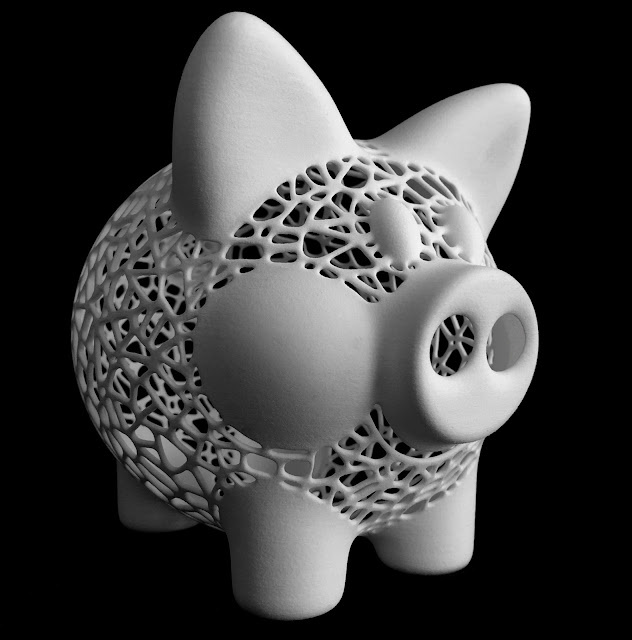
Finally, against the background of other events, getting additional suffering from plastic was no longer so scary and I decided to continue my amateurish tests. This time I took a dusty...
Read more
Consumables
-one
Subscribe to the author
Subscribe
Don't want
Hello, 3DToday!✌️
This Friday, after 18:00, watch another informative episode for beginners and those who are interested in additive technologies!
Read more
Consumables
four
Subscribe to author
Subscribe
Don't want
A few months ago our company IMPRINTA released a new composite material Clotho PA12 GF40.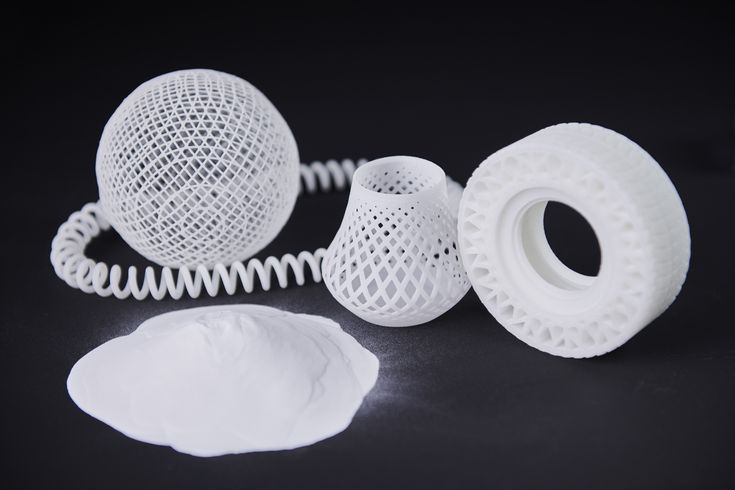 It consists of reinforced polyamide 12 (PA12) and glass fiber (40%), it retains elasticity at low temperatures, and is also resistant to dilute alkalis, gasoline, oil, which greatly expands its use.
It consists of reinforced polyamide 12 (PA12) and glass fiber (40%), it retains elasticity at low temperatures, and is also resistant to dilute alkalis, gasoline, oil, which greatly expands its use.
Read more
Consumables
5
Subscribe to the author
Subscribe
Don't want
Dear friends!
We continue the story of our nylons.
In mid-2020 we launched U3 NYLON SC M4 V3
An improved version of the SUPER nylons. Compound based on PA12 filled with ~20% carbon fiber. Improved interlayer adhesion, strength, hardness. The operating temperature has risen. Nylons based on PA 12 are more ductile, more wear resistant than those based on PA6, they have practically no moisture absorption ...
Read more
brtv
Loading
09/05/2022
2053
Consumables
13
Follow author
Follow
Don't want
Hello!
Hundreds of variations of different feed tables exist on the Internet.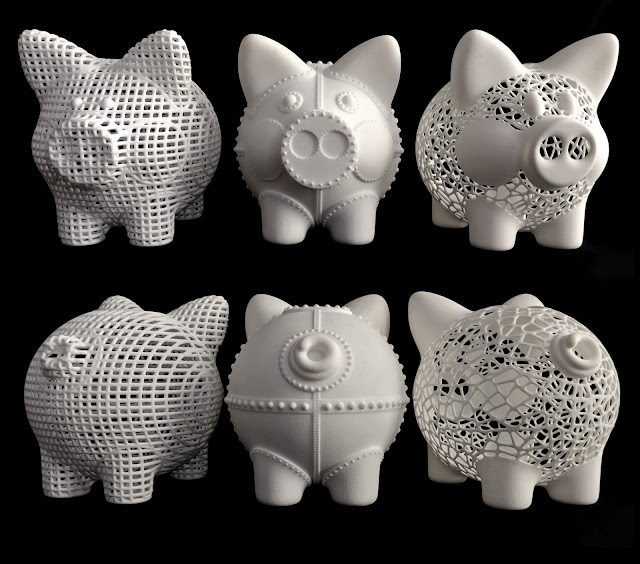 But many write to me that all these machines are very complex and expensive to manufacture. Electronics, display, stepper motor power supply microcontroller, you also need to know the programming language. all this makes it difficult to assemble this machine for those who do not know electronics.
But many write to me that all these machines are very complex and expensive to manufacture. Electronics, display, stepper motor power supply microcontroller, you also need to know the programming language. all this makes it difficult to assemble this machine for those who do not know electronics.
Today I will try to assemble a very simple machine. I will collect half of the garbage. Why not...
Read more
Consumables
5
Subscribe to the author
Subscribe
Don't want
Dear friends!
Today we will talk about Art plastic.
In our laboratory a new Buratino (U3 ART PLA HP BURATINO v.2) with 10% wood dust was born from a log with a knot.
Its advantage over the first version is that it is much more visually and tactilely similar to real wood. This material can be sanded and varnished.


 Performance requirements include strict lifetime testing with cyclic loading and unloading, color fastness over periods of years, amongst others like tear resistance.
Performance requirements include strict lifetime testing with cyclic loading and unloading, color fastness over periods of years, amongst others like tear resistance.